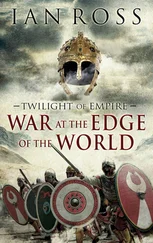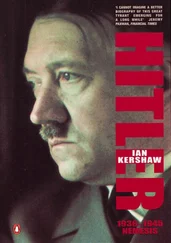10. The above, where not otherwise indicated, is based on DZW , 6, pp. 561–71; DRZW, 10/1 (Zimmermann), pp. 443–60; Fritz, chs. 3–6; Lothar Gruchmann, Der Zweite Weltkrieg , pb. edn., Munich, 1975, pp. 425–32; The Oxford Companion to the Second World War , ed. I. C. B. Dear and M. R. D. Foot, Oxford, 1995, pp. 481–5; Max Hastings, Armageddon: The Battle for Germany 1944–45 , London, 2004, pp. 481–502.
11. Hitlers Weisungen für die Kriegführung 1939–1945: Dokumente des Oberkommandos der Wehrmacht , ed. Walther Hubatsch, pb. edn., Munich, 1965, pp. 355–6. Dönitz and Kesselring were given full powers over the defence of their own zone only in the event that a break in communications prevented the transmission of Hitler’s orders and decisions. Otherwise Hitler’s own unified operational leadership was to remain unaltered. On 20 April, in line with the expectation that he would leave for the south, Hitler empowered Dönitz, in the north, to issue directives on defence to the civilian authorities in his ‘zone’. In the military sphere, Dönitz’s remit was confined to the navy, since Hitler finally decided on 25 April to remain in Berlin and to retain his operational direction of the Wehrmacht via the OKW in Rheinsberg.—Herbert Kraus, ‘Karl Dönitz und das Ende des “Dritten Reiches”’, in Hans-Erich Volkmann (ed.), Ende des Dritten Reiches—Ende des Zweiten Weltkriegs: Eine perspektivische Rückschau , Munich and Zurich, 1995, pp. 7–8 and p. 20 n. 17. The split of the Reich became reality with the meeting of Soviet and American troops at Torgau on 25 April.
12. DZW , 6, p. 523. A graphic description of the last days in Königsberg before the capitulation (and criticism of Lasch’s reluctance to capitulate until the last minute, and to save his own skin) is provided by Michael Wieck, Zeugnis vom Untergang Königsbergs: Ein ‘Geltungsjude’ berichtet , Heidelberg, 1988, pp. 168–222.
13. His wife and daughter were arrested and placed in a military prison. News of their punishment was publicized.—Robert Loeffel, ‘Soldiers and Terror: Re-evaluating the Complicity of the Wehrmacht in Nazi Germany’, German History , 27 (2009), pp. 527–8.
14. Schwendemann, p. 97.
15. In the proclamation, Hitler raised once more the spectre of the extermination of the German people that, he claimed, would follow Bolshevik conquest. ‘While old men and children are murdered,’ he railed, ‘women and children are denigrated to barrack-whores. The rest will march off to Siberia.’ Alerting the troops to any sign of treachery from their own officers, Hitler ordered that any officer not well known to the men giving orders for retreat was to be ‘dispatched on the spot’.— Hitler: Reden und Proklamationen 1932–1945 , ed. Max Domarus, Wiesbaden, 1973, pp. 2223–4.
16. Drawing on DZW , 6, pp. 686–705; DRZW , 10/1 (Lakowski), pp. 631–49; DRZW , 8 (Ungváry), pp. 944–55; Gruchmann, pp. 434–6; John Erickson, The Road to Berlin , Cassell edn., 2003, pp. 563–77; Brian Taylor, Barbarossa to Berlin: A Chronology of the Campaigns on the Eastern Front 1941 to 1945 , vol. 2, Stroud, 2008, pp. 307–20; The Oxford Companion to the Second World War , pp. 125–7; Antony Beevor, Berlin: The Downfall 1945 , pb. edn., London, 2007, chs. 15–16; Karl-Heinz Frieser, ‘Die Schlacht um die Seelower Höhen im April 1945’, in Roland G. Foerster (ed.), Seelower Höhen 1945 , Hamburg, 1998, pp. 129–43; Manfried Rauchensteiner, Der Krieg in Österreich 1945 , 2nd edn., Vienna, 1984, ch. 6; Theo Rossiwall, Die letzten Tage: Die militärische Besetzung Österreichs 1945 , Vienna, 1969, pp. 78–183.
17. For sketches of the man and his career, see: Sam L. Lewis, ‘Albert Kesselring—Der Soldat als Manager’, in Ronald Smelser and Enrico Syring (eds.), Die Militärelite des Dritten Reiches , Berlin, 1995, pp. 270–87; Elmar Krautkrämer, ‘Generalfeldmarschall Albert Kesselring’, in Gerd. R. Ueberschär (ed.), Hitlers militärische Elite , vol. 1: Von den Anf ä ngen des Regimes bis Kriegsbeginn , Darmstadt, 1998, pp. 121–9; and Shelford Bidwell, ‘Kesselring’, in Correlli Barnett (ed.), Hitler’s Generals , London, 1990, pp. 265–89.
18. BAB, R3/1661, fo. 20, ‘Niederschrift über die Ereignisse vom 15.3. bis 15.4.1945’, no date, signed by Walther Rohland (entry for 23.4.45); Albert Speer, Erinnerungen , Frankfurt am Main and Berlin, 1969, p. 446. Kesselring passed on Hitler’s ‘scorched earth’ order of 19 March next day to his subordinate commanders.—Krautkrämer, p. 128 n. 10.
19. Speer, pp. 463–4. General Westphal later pointed out that Kesselring, on taking over from Rundstedt as Commander in Chief West, replied sceptically to the attempt to provide him with a realistic briefing of the situation by stating that the Führer had given him a different account.—Siegfried Westphal, Erinnerungen , Mainz, 1975, p. 327.
20. The Memoirs of Field-Marshal Kesselring , Greenhill Books edn., London, 1997, pp. 266, 269.
21. Joachim Ludewig, ‘Walter Model—Hitlers bester Feldmarschall?’ in Smelser and Syring, p. 368.
22. 1945: Das Jahr der endgültigen Niederlage der faschistischen Wehrmacht. Dokumente , ed. Gerhard Förster and Richard Lakowski, Berlin, 1975, p. 230 (18.3.45).
23. Quoted DRZW , 10/1 (Zimmermann), p. 332 (29.3.45); see also Manfred Messerschmidt, ‘Krieg in der Trümmerlandschaft: “Pflichterfüllung” wofür?’ in Ulrich Borsdorf and Mathilde Jamin (eds.), Über Leben im Krieg: Kriegserfahrungen in einer Industrieregion 1939–1945 , Reinbek bei Hamburg, 1989, pp. 171, 177.
24. Carlo D’Este, ‘Model’, in Barnett, p. 329; Kesselring, pp. 250–55, attributed much of the blame for the plight of Army Group B to Model’s operational decisions.
25. BAB, R3/1626, fos. 15–17, ‘Kapitulationsverhandlungen mit Generalfeldmarschall Model und Gauleiter Hoffmann’, notes compiled in internment in ‘Dustbin’, June 1945, by Rohland. And R3/1661, fo. 21, ‘Niederschrift über die Ereignisse vom 15.3. bis 15.4.1945’, no date, signed by Walther Rohland (entries for 31.3, 2.4, 8.4, 13.4.45); Walter Rohland, Bewegte Zeiten , Stuttgart, 1978, pp. 105–7. Model also refused to entertain the plea in a personal letter to him from US Lieutenant-General Matthew Ridgway on 17 April, declaring that his oath to the Führer meant he must fight to the end.—Hastings, p. 482; Messerschmidt, p. 177.
26. Ludewig, pp. 382–4; Rohland, p. 107; Walter Görlitz, Model: Strategie der Defensive , Wiesbaden, 1975, pp. 263–8; John Zimmermann, Pflicht zum Untergang: Die deutsche Kriegführung im Westen des Reiches 1944/45 , Paderborn, 2009, p. 2. The order to make families the guarantors of soldiers fighting to the last was signed by Keitel on Hitler’s behalf on 5 March.— 1945: Das Jahr der endgültigen Niederlage der faschistischen Wehrmacht , p. 207. Strikingly, the initiative for this came from within the Wehrmacht.—Ulrike Hett and Johannes Tuchel, ‘Die Reaktionen des NS-Staates auf den Umsturzversuch vom 20. Juli 1944’, in Peter Steinbach and Johannes Tuchel (eds.), Widerstand gegen den Nationalsozialismus , Bonn, 1994, p. 387.
27. Cited DRZW , 10/1 (Zimmermann), p. 327 (7.4.45).
28. DRZW , 10/1 (Zimmermann), pp. 331–2.
29. IWM, EDS, F.3, AL2697, ‘Doenitz orders Resistance to the last. 3 Orders—7, 11, and 19 April 1945’.
30. KTB/SLK, part A, vol. 68, pp. 331–2A, Kriegstagebuch des Ob. d. M., 25.4.45.
31. BA/MA, N265/112, NL Heinrici, fos. 1–17 (written during captivity, 1945–7 and incorporating memoirs of Colonel Eismann). Though entitled ‘Der Vortrag bei Hitler am 4.IV.1945’, the meeting appears in fact (see fo. 20) to have taken place not on the 4th but on 6 April. Heinrici had already composed a briefer, though in essentials similar, account of the meeting on 12 May 1945 (BA/MA, N265/108, fos. 3–9, where he dates it to ‘about ten days before the beginning of the battle for Berlin’).
Читать дальше












